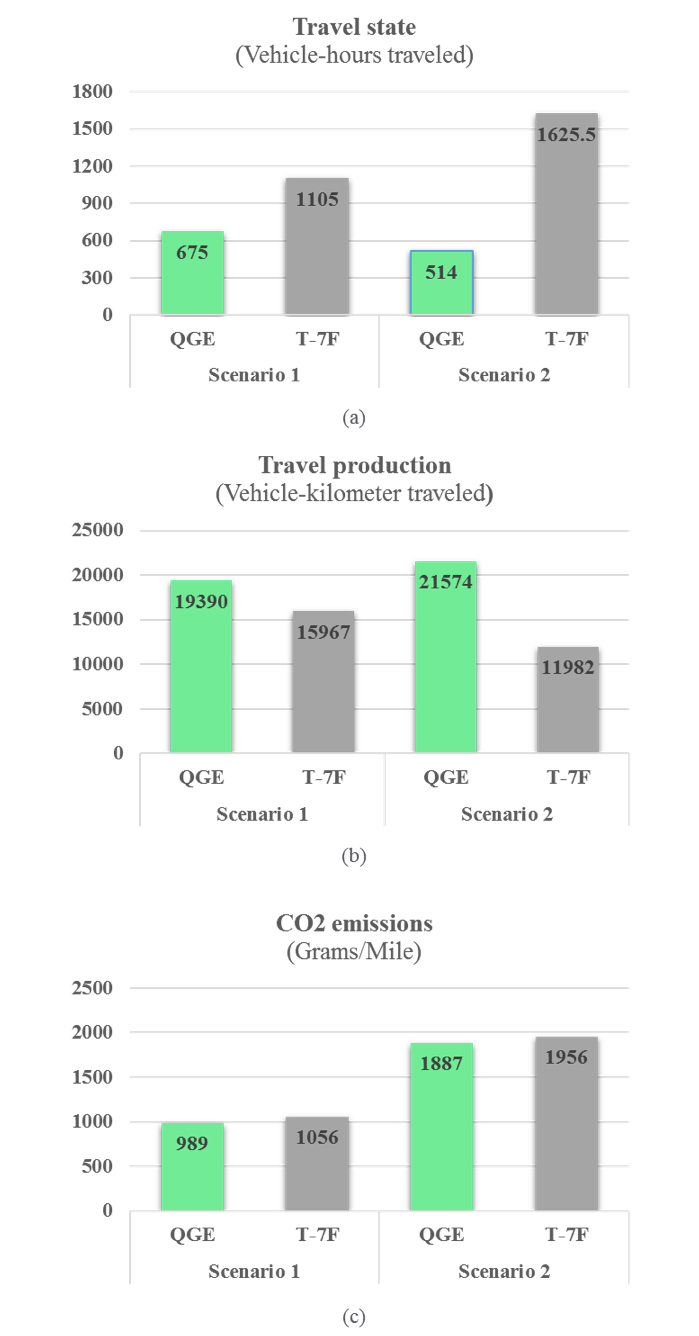A research project of Saudi Aramco-KAIST CO2 Management Center project titled Eco-operation of traffic flows by enhancing efficiency of urban transport network has been carried out by Professor Kitae Jang and Professor In Gwun Jang from the Graduate School of Green Transportation at Korea Advanced Institute of Science and Technology (KAIST). They have developed a novel principle of optimizing traffic signal operations to diminish CO2 emissions in the congested urban networks.
Overall, the transportation sector has produced 23.3% of the total world CO2 emissions, where roadways accounted for almost three-quarters of the emissions (International Energy Agency, 2016). In urban areas, traffic congestion has caused many problems in urban life not only causing delays in travel but also negatively impacting fuel efficiency of vehicles and CO2 emissions. The congestion on roadway networks, which are composed of nodes and links, frequently arises due to localized and intense traffic demand. When the initial queue formed at a single node grows and spills over to upstream nodes, other traffic flows that intersect with the queue become constrained and form additional queues. If this phenomenon spreads widely over a network, traffic states in the network turn into a gridlock, which substantially degrades travel conditions in the network. Under this traffic state, vehicles confront frequent stop-and-go situations that require drivers to abruptly throttle and consequently increase CO2 emissions.
To mitigate such a phenomenon, this study developed an optimal operation of traffic signals that distribute congestion over the entire network, which lead to better utilization of the roadway capacity and thereby mitigate traffic congestion. The principle of this optimization, queue growth equalization (QGE), is to design traffic signal timings (i.e., cycle time and green times) in order to minimize the imbalance between inflow and outflow for every link in the network. This, in turn, postpones queue spillovers, enhances vehicle mobility, and reduces CO2 emissions in the network.
Simulation experiments have been conducted in idealized environments to control other potential factors that often exist in real-world conditions (Figure 1). For the first scenario, a bottleneck was studied to investigate the outcomes in single queuing situations (Scenario 1). The second scenario evaluates the performance under complex queuing situations by creating multiple bottlenecks (Scenario 2). Traffic simulation experiments reveal that the method substantially enhanced traffic conditions in the network when evaluated in three different measures of effectiveness (MOE): vehicle-hours traveled (VHT: measure of travel state), vehicle-kilometers traveled (VKT: measure of travel production), and CO2 emissions (measure of negative impacts). Compared with T-7F (conventional way of optimizing traffic signal settings), QGE diminished VHT and CO2 emissions (see Figure 2(a) and (c)) and increased VKT (see in Figure 2(c)) in both scenarios. This implies that QGE can optimize traffic signals so that more travel distance (i.e., VKT) can be served with shorter travel time (i.e., VHT) and less CO2 emissions.


Prof. Jang, Kitae and Prof. Jang (In Gwun Cho Chun Shik Graduate School of Green Transportation)
Homepage: http://tops.kaist.ac.kr, http://idlab.kaist.ac.kr
E-mail: kitae.jang@kaist.ac.kr






